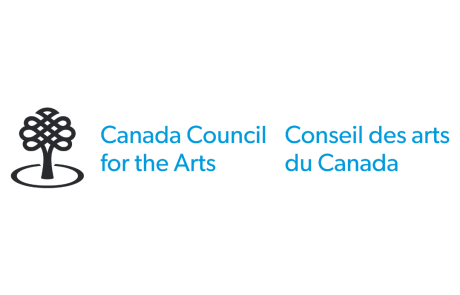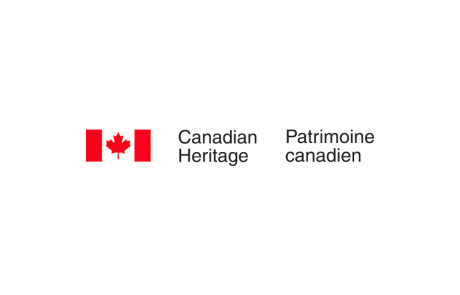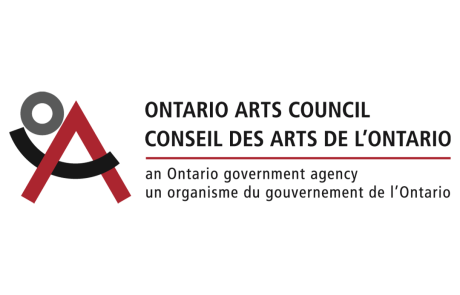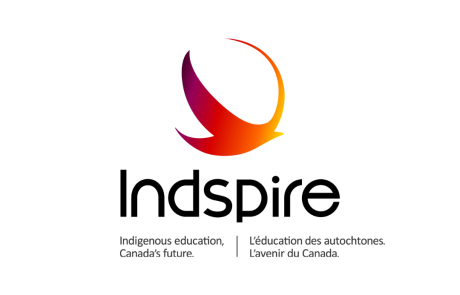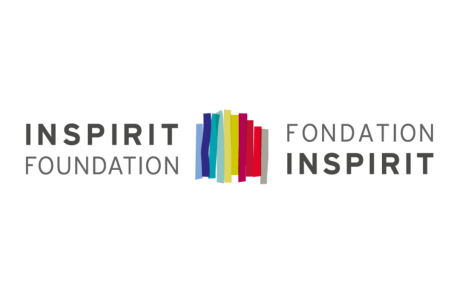
Production Still from Metis Femme Bodies Documentary by Chanelle Lajoie
I’ll Share My Medicines If You Don’t Have Enough Room For Yours
By Jennifer Smith
Over the period of a couple of months in 2019 I kept hearing about Chanelle Lajoie and the short film they made, Métis Femme Bodies. Somehow I kept missing screenings of the film. Then came what I consider a fateful day. I was asked to be a mentor for the MAWA Foundation Mentorship program in 2020 and Chanelle applied to be a mentee. Through this process I watched Métis Femme Bodies for the first time and knew Chanelle and I needed to meet and work together. Up to that point I had crossed paths with Chanelle only once in early 2020, and looking back it seems strange that since we are both Metis people working in media art. Either way we now had the opportunity to get to know each other. Although I am excited about the relationship Chanelle and I have built over the last two years as mentor / mentee, friends, colleagues, collaborators and kin, I am here to focus on their work.
Chanelle began their impressive career working with film and video by simply coming up with an idea and starting. There was no worry about perfecting camera skills, or having studied film for years. Chanelle had an idea, knew how they wanted that story to come alive on screen and began. In watching Chanelle’s short films, you get to see the ways they have grown as a filmmaker, artist, and the ways their connection to their Metis culture and queer identity changes and deepens. Chanelle’s story telling method is not explicitly about a personalized story, but often looks at the ways others are navigating the same questions and thoughts they have for themself. Chanelle is making this work for Métis people and even more broadly the entire Indigenous community. The stories come from the heart with a queer lens.
Chanelle has made three films; Métis Femme Bodies, Grandmother’s Tongue and Land (Ab)Use.
Métis Femme Bodies was their first film as mentioned above it was released in 2019. The film introduces the viewer to Métis people inspecting their bodies only wearing underwear, the camera only allows us to see their torsos, and sometimes legs depending on how they are moving. The bodies are all ‘femme’ bodies of varying size, shapes and colours. There are voices over the images of the bodies talking about moving through the world in Métis bodies. The discussions meander through topics of shame, beauty, privilege, identity, skin colour and many other personal thoughts. This is an intimate portrait, the people on screen are seen moving their hands over their bodies in an everyday way, inspecting scars, tattoos, stretch marks, hairs. It is striking and a little uncomfortable, because these are unusual documentations of feminine bodies and how they are portrayed on screen. This intimacy is mirrored in the stories being told, discussions that are often held in, or only talked about with other Métis people navigating identity. Ultimately working to understand what their responsibility is to not only their own Métis bodies, but to those around them, to those that came before, and those who will come after.
Grandmother’s Tongue is a sensual short film. Based on the title there is an assumption that the film will focus on language and trying to navigate learning their grandmother’s language, Michif. The film is filled with references to Métis culture, from the only person we see in the film wearing beaded earrings, eating strawberries, and the entire film being narrated in Michif we can see the ways Métis/Michif life continues to exist in a contemporary way. There is a fuzzy moment part way through the film describing the nervousness and quivering tongue as they tried something new. The new experience changes the description to the excitement of a first queer sexual experience but could just as easily be referencing the nervousness of the responsibilities of learning your ancestor’s language. In the beginning of the film it is easy to get caught up in the excitement of learning and understanding the language of your people and to not immediately see this shift in the film, the title leads you to assume this film will focus solely on language, but leads to another story of identity. The stories are there in tandem. The feelings on the tongues, the excitement of trying something new and knowing it is what you need in your life, the release of allowing yourself to explore every part of yourself deeply. In similar ways to Métis Femme Bodies, Chanelle honours all the parts of what it means to them to live in the here and now as a Métis queer person.
Between Grandmother’s Tongue and Land (Ab)use, Chanelle’s art practice had some new influences. They began applying to residencies, mentorships, and learning opportunities. Chanelle was accepted into the MAWA Foundation Mentorship Program, the Toronto Queer Film Festival’s DIY Lab, the Doc Salon Fellowship through imagineNATIVE and the European Film Market and was part of the Harbour Collective’s Meech Lake residency. The Harbour Collective residency led to the making of Land (Ab)use, and consequently Chanelle was invited to be part of the exhibit NO I.D. Required at PAVED Arts in Saskatoon.
Through these initiatives Chanelle began researching and shifted focus to ideas of Indigenous Futurisms. They hosted discussions that asked people to imagine thriving futures, projected hope for the future. These exercises allowed participants to build a collective vision of what could be manifested spiraling through time together.
The questions Chanelle asks themself about the future come forward in Land (Ab)use, very poignantly the words ‘Where do we go from here’ appears on screen. This seemingly is one of the first times in Chanelle’s films that there is a focus on themself, one frame that implies they have questions that need answering. But the community is still present, the question does include ‘we’, even though this question is coming from Chanelle’s voice. The questions keep coming; ‘Who can hear us?’; ‘Who will listen to us?’; ‘Who is included in us? You and I, and who else?’; ‘How did we come together?’. The imagery on screen changes periodically, there is always industrial infrastructure present, along with nature, the nature is either present as part of the infrastructure, or placed onto it in a collage of video. The questions continue evoking many emotions; ‘How will we stay together?’ ‘For how long?’ ‘Why?’ As the questions and imagery change there is the sound of a trickle of water, at times quieter and others louder, a calming constant as the questions ask more of the viewer. Who is Chanelle asking these questions of? They include the self, but as I am watching, reading, feeling, hearing my way through the film, I wonder if the questions are being asked of me? I imagine myself with Chanelle and begin answering the questions of who else I want to bring along, and I now have questions for Chanelle of who they would like to bring. I also wonder if I am incorrectly placing myself as part of the questions being asked, are they for a loved one of theirs, or for the person Chanelle most wants in the future alongside them? Or could this film exist to make me feel like the loved one, perhaps if you are open to answering these questions and being part of this future you will be enveloped in the love the Chanelle’s questions are filled with.
One of the most striking lines in Land (Ab)use is ‘I’ll share my medicines if you don’t have enough room for yours’. Chanelle’s work is an example of sharing their medicines, they are sharing stories, feelings, love and open up space for community, all while on a journey of growth as an artist. Chanelle is an emerging artist who has an extremely bright future, and will share that future with those willing to join the journey.
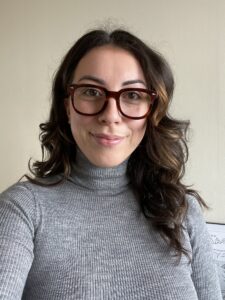
Chanelle Lajoie, a Queer Red River Michif and Swampy Cree futurist from Treaty 1 Territory, is currently concluding their legal studies at McGill University, located on Tiohti:áke Territory while balancing a multifaceted background that integrates both professional and creative pursuits. As a multi-disciplinary artist, Chanelle actively honors and engages with the communities to which they belong. Notable projects include Métis Femme Bodies (2019), Lavender Menace (2020), and Land (Ab)Use (2022). Screenings of these works have taken place internationally in private community settings and public international film festivals. Chanelle’s involvement in various mentorship programs, such as MAWA’s Foundation Mentorship Program (2020-21) and the Toronto Queer Film Festival’s DIY Lab Mentorship Program (2020-21), has prepared them for projects such as Grand Mother Tongue (2020) and Bison Hunt (2021), the latter part of ImagineNATIVE’s Doc Salon Fellowship at the European Film Market (2021). While in Montréal, Chanelle has participated in Montréal’s Image+Nation mentorship programming while simultaneously conducting research for the National Indigenous Media Arts Coalition (NIMAC) on the indigenization of legal contracts for Indigenous media artists (2022-23).
They are also invited to contribute their expertise on panels and at conferences addressing topics speaking to restorative justice practices, the digital divide, and prison expansion. Chanelle’s commitment to learning and sharing within the public law sector extends to their legal internship at the Bulgarian Center for Not-for-Profit Law, where they conducted extensive research on socio-political and legal barriers faced by People with D/disabilities, contributing to a nuanced understanding of complex issues. Their recent essay, Off Paper and On-the-Ground: Comparing the Experiences of Bulgarian Rainbow Families Caught Between European Union Treaties and National Transgressions is set to be presented at the Martine Roy Colloquium (2024). As a research assistant and editor for Mila, McGill University, the University of Winnipeg, and NIMAC, Chanelle has engaged in projects exploring misogyny in film scripts, decolonizing Freedom of Information (FOI) and Access to Information (ATI) requests, and indigenizing relations between contracts, art, and artists.
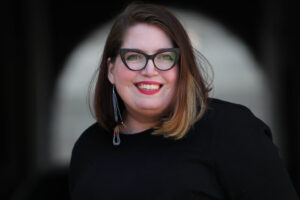
Jennifer Smith is a Red River Métis independent curator, writer, and arts administrator from Treaty 1 Territory/Winnipeg. Jennifer has curated exhibitions for Gallery 1C03, AKA artist-run, the Manitoba Craft Council, and was the Indigenous Curator in residence at AceArtInc. in 2018 and works with the Window Winnipeg Collective. Her writing has been published through galleries and art publications, as well as she was part of the 2022 Momus Emerging Critics Residency: Writing Relations, Making Futurities: Global Indigenous Art Criticism. Through her work as an arts administrator Jennifer works as the Executive Director of the National Indigenous Media Arts Coalition (NIMAC). Jennifer worked for twelve years in Media Art Distribution Centres, where she worked with and managed the archives associated with two distribution collections. Through this work she developed a great love for A/V preservation and understanding access to historical film and video collections.
Image used: © Concordia University. Photo by Marc Bourcier, 2021


